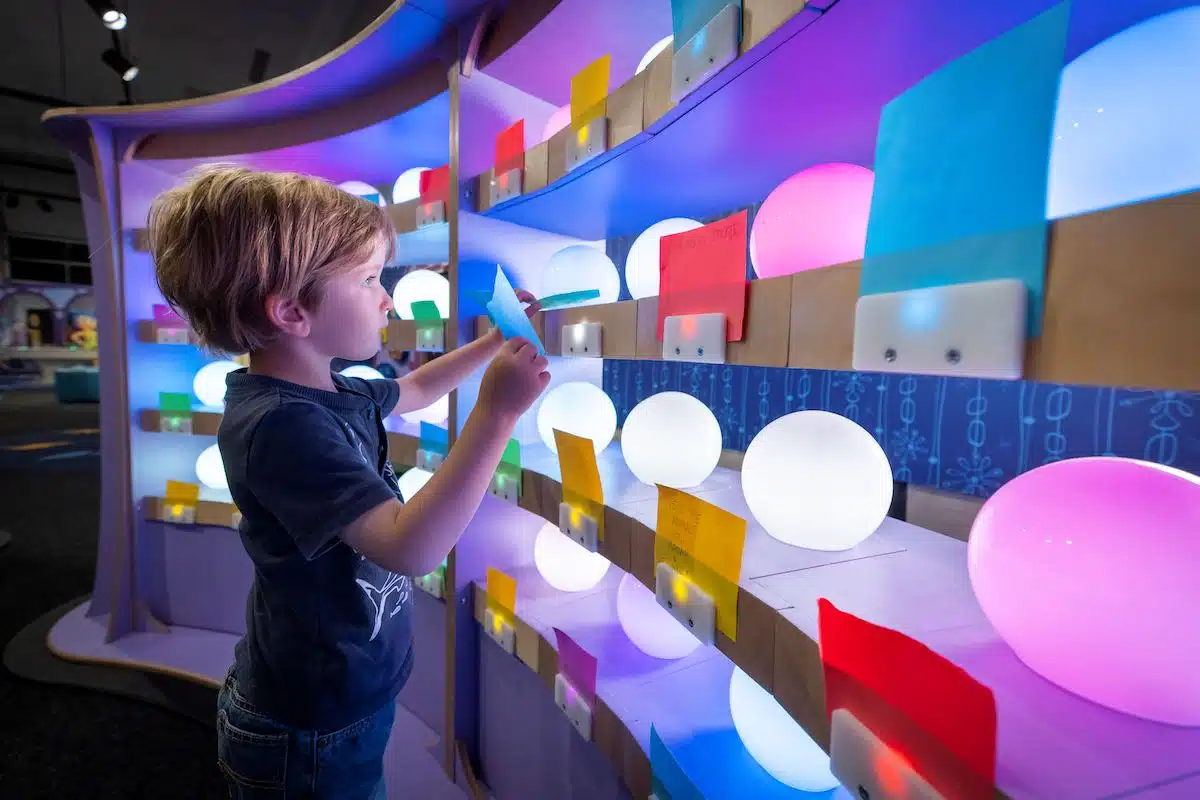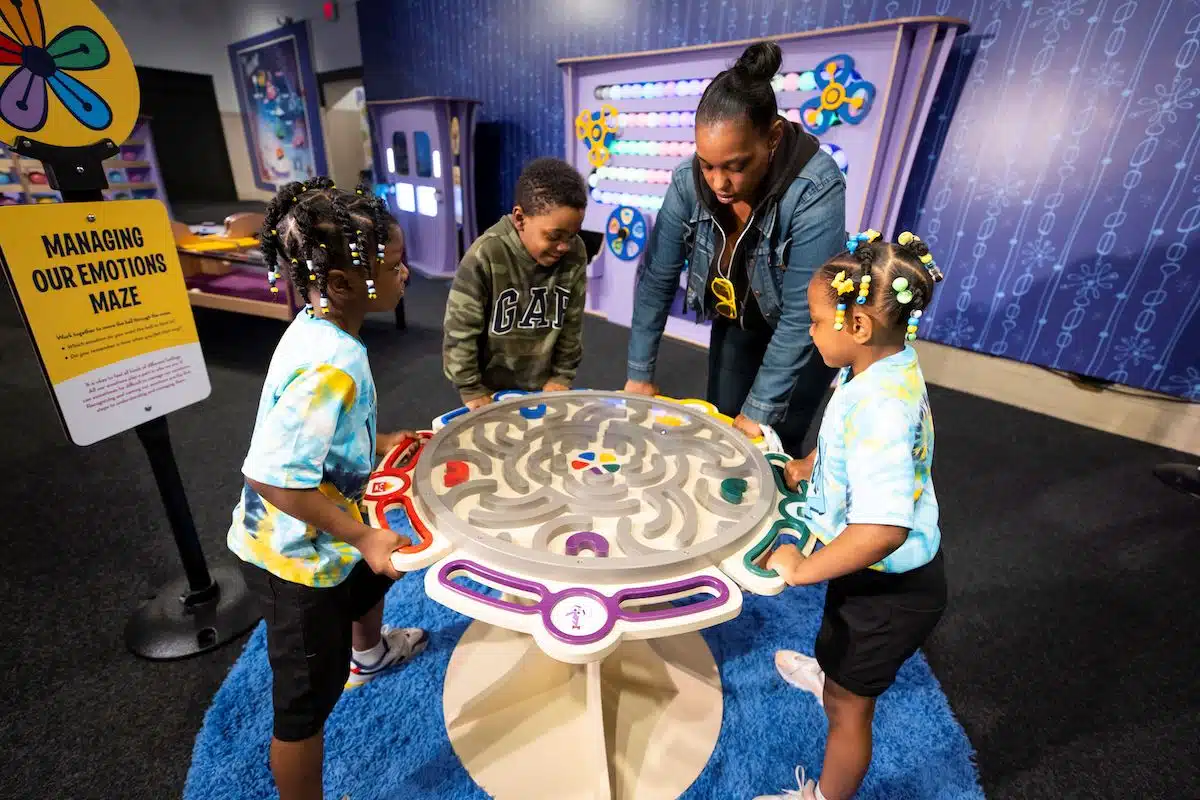Look in the mirror and what do you see? Help kids discover their emotions at Emotions at Play, the newest exhibit at The Children’s Museum of Indianapolis. Based on the Disney and Pixar movie Inside Out, Emotions at Play encourages a new generation to explore the way they feel and learn ways to handle those feelings.
It’s important to remember that it’s OK to feel the way you do. “Emotions are important for helping us to understand and process the world around us,” says Dr. Julia LaMotte, pediatric psychologist at Riley Hospital for Children. These signals are our mind and body’s way of responding to the environment. When we ignore our feelings, it’s as if we’re telling our internal system that this information isn’t important.
Emotions at Play Exhibit Details:
Dates: Open Feb. 3–May 19, 2024
Ages: Recommended for ages 3–8
In Emotions at Play with Pixar’s Inside Out learn about the important role emotions, memory, and imagination play in our everyday lives. Fun-filled interactive experiences focus on the five emotions featured in the film—Joy, Sadness, Anger, Disgust, and Fear. Learn to recognize emotions and explore ways that we express and manage our own emotions.
When feelings bottle up, it makes it harder to figure out where they’re coming from. We see this often with anger. For example, when a child is angry, we might see them act out or say things they typically wouldn’t.
“Anger is like the tip of an iceberg,” Dr. LaMotte says. “We can only see the ice that’s above the water, but the mass underneath is so much larger. Similarly, while anger might be what we can see, it may actually be feelings of embarrassment, hurt, worry, disappointment or guilt that are underlying.”
Elyse Handel, early childhood educator at The Children’s Museum of Indianapolis, suggests that providing young children opportunities to identify, recognize and understand their emotions and feelings is critical to their self-development.
“When children engage in social-emotional learning, they are actively developing their self-awareness, relationship and communication skills,” Handel says. “The exhibit, Emotions at Play, will provide children with opportunities to practice and apply these emerging skills in fun engaging ways.”

Hands-on and digital experiences in the exhibit focus on five emotions: joy, sadness, anger, disgust and fear. Discover how emotions “push your buttons” and how different people react to those emotions:
- Step into headquarters to explore the range and intensity of emotions at the Control Panel
- Explore some of the ways people show how they feel with their faces and bodies at the Emotions Mirrors
- Think about an important memory and how it made you feel — or show feelings right now by creating a glowing Memory Sphere
- Use imagination to create a story and perform it at Dream Productions
- Work to keep the train on track. What feelings do you have when you control and balance the Train of Thought?
- Explore how emotions work together as you stack and balance the Emotion Blocks
Parents can continue the conversation about emotions by asking kids what they are feeling and figure out ways to name the emotion. When we help kids name what they’re feeling, it helps to put words to what is already going on in their bodies.

“Explain how sometimes fear protects us, like keeping us from danger,” Dr. LaMotte says. “But sometimes, fear keeps us from doing things we need to, like getting a shot. When we do hard things, that’s a different emotion — bravery.”
Rather than telling your child what they’re feeling, help them develop the skills to recognize different feelings and ways to respond to them, such as taking deep breaths when they need to slow down and reset.
We all think we need to be happy all the time, but that is not true.
“Emotions are neither good nor bad, they simply are,” Dr. LaMotte says. Changing the way we think about emotions can help parents facilitate conversations. Often we get trapped into thinking that “happy” is “good” and “mad” is “bad.” Rather, these emotions give us really helpful information, because it helps us to figure out what we can do next.
Also remember that emotions come and go — they don’t stick around forever. As Dr. Lamotte suggests, parents should encourage little ones to fully feel all emotions and help them understand that they are not alone. In this way, kids learn that their grown-ups will try to be there for them if they share their emotions, and that trusted adults can help them to cope, if needed.








